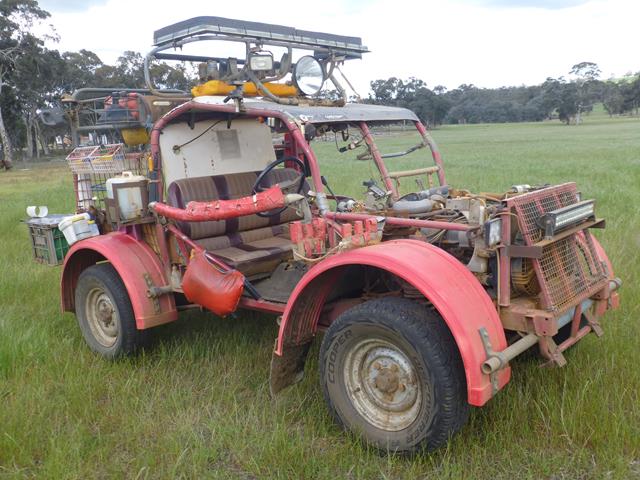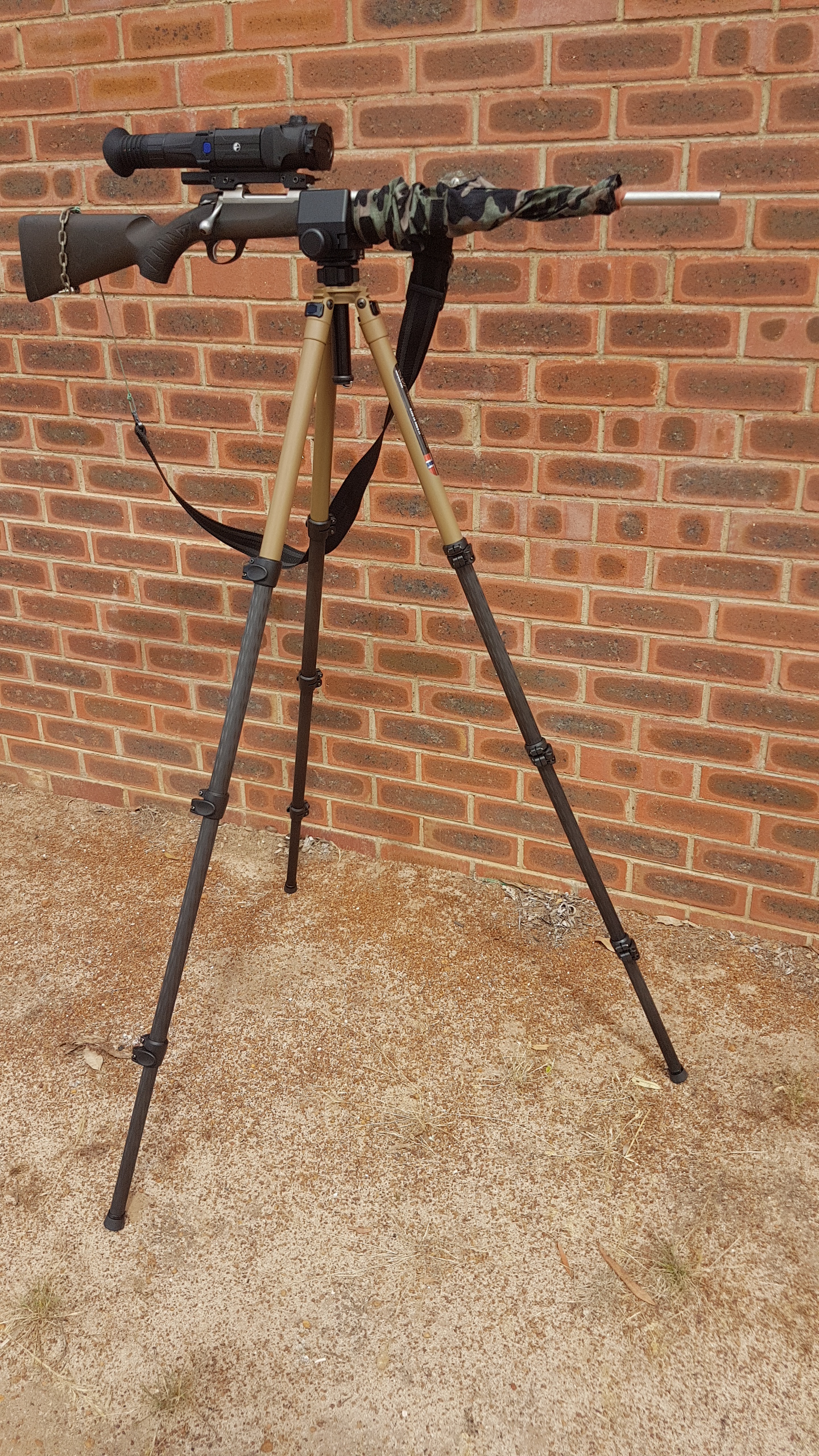Spotlight hunting
To prepare Rover for spotlighting – check the engine oil, radiator, brake and clutch fluid. Fill the petrol tanks, check tyres, spotlights and headlight. Hitch the car trailer to the towing vehicle and drive Rover on tying it securely with ratchet straps.
for spotlighting – check the engine oil, radiator, brake and clutch fluid. Fill the petrol tanks, check tyres, spotlights and headlight. Hitch the car trailer to the towing vehicle and drive Rover on tying it securely with ratchet straps.
Put on board the required firearms, ammunition, warm clothing and electronic ear muffs for hearing protection. Drive to the property where permission has been obtained to shoot on. Familiarise by communicating with the owner/manager what activities are happening such as seeding or harvesting and sensitive livestock such as horses and sheep/cattle in yards or holding paddocks. Once arrived, unload Rover, place firearms in the gun racks, stow ammunition, set up GPS for guidance and recording distance, then head off. Be aware of hazards such as rock piles, wheel ruts, drains and washouts. If unsure, refrain from chasing down foxes. Calling the fox into range and shooting with a rifle is a safer option. Our technique is; once a distant fox is seen (foxes and cats instinctively look at a light shone at them most times and you get eye shine), turn towards the fox, stop, shut the motor off, turn off all lights but one spotlight, switch on the “Secret Weapon” speaker. Shine the light low in front of the incoming fox so as to just see its eye shine. When in range, shine the light directly at it and you may have to call out to cause it to stop. Be quick and accurate as sometimes it won’t stop for long. Please make all firearms safe before alighting from the vehicle.
When the hunt is finished, unload and make safe the firearms, stow all gear, load Rover on the trailer and drive home.
Thermal Night Stalking. Best done with no moon. The darker the better.
To be as stealthy as possible is the key to success. Because you will be walking, a suitable pair of strong boots or gum boots should be worn. Camouflage clothing is a great advantage, if not, wear dark blue and avoid a contrast between jacket and trousers. I have my thermal monocular on a lanyard around my neck, I wear a head torch which I use only if I have to and electronic ear muffs which allow normal sounds to be heard but cancel out harmful loud sounds such as gunfire. If hunting with someone else, the ear muffs are plugged into a low powered UHF hand held 2-way radio also on a lanyard. I carry spare ammo in my pockets loose but not rattling. My rifle is on an elongated sling and is clamped to my tri-pod.  The tripod allows for reasonably steady shooting from a standing position. I walk slowly looking around with my thermal monocular, stopping regularly to scan for foxes and feral cats. The behaviour of animals in darkness is so different to seeing them in a spotlight. They generally move around slowly. You can often approach reasonably close without them seeing you, however when they do see you, they are most likely to stop, look and even move closer. Gunfire does not always frighten the ferals as they don’t always know where the sound is coming from. The echo from background bush sometimes causes them to come towards you if they haven’t already been stopped by the shot. In some circumstances, it is worth turning on the head torch for a look around. You might get eye shine from a cat or fox that you haven’t seen with thermal. (foxes and cats instinctively look at a light shone at them most times and you get eye shine)
The tripod allows for reasonably steady shooting from a standing position. I walk slowly looking around with my thermal monocular, stopping regularly to scan for foxes and feral cats. The behaviour of animals in darkness is so different to seeing them in a spotlight. They generally move around slowly. You can often approach reasonably close without them seeing you, however when they do see you, they are most likely to stop, look and even move closer. Gunfire does not always frighten the ferals as they don’t always know where the sound is coming from. The echo from background bush sometimes causes them to come towards you if they haven’t already been stopped by the shot. In some circumstances, it is worth turning on the head torch for a look around. You might get eye shine from a cat or fox that you haven’t seen with thermal. (foxes and cats instinctively look at a light shone at them most times and you get eye shine)
Please note, animal identification can be an issue when using thermal night vision equipment. Hi quality scopes such as the Pulsar Trail are helpful with its high definition and magnification. IR or Infrared night vision can give a clearer image of the animal depending on the intensity of the IR lamp once the animal is located. Location of animals is much more effective with thermal equipment particularly when partly obscured by vegetation. Infrared light reflects giving eye shine but will illuminate vegetation giving the animal a cover advantage.
Happy Hunting
